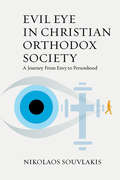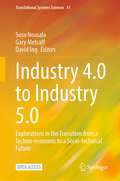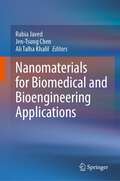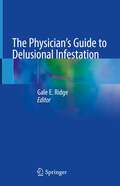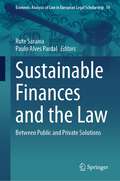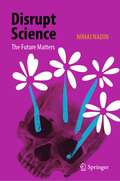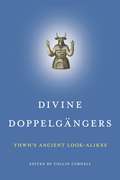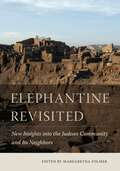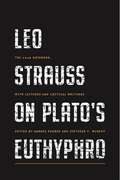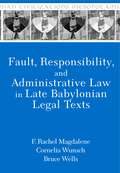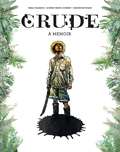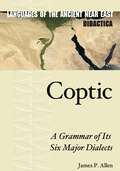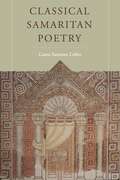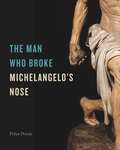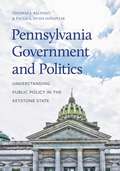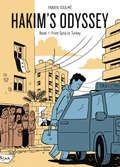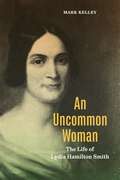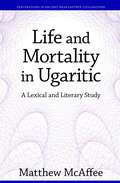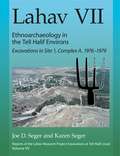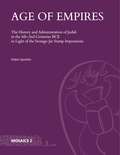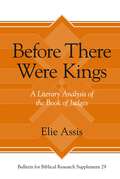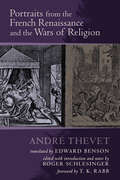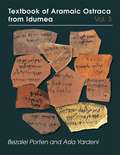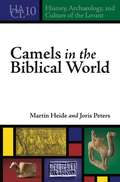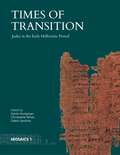- Table View
- List View
Evil Eye in Christian Orthodox Society: A Journey from Envy to Personhood
by Nikolaos SouvlakisEvil eye is a phenomenon observed globally and has to do with the misfortune and calamities that we can cause to someone else out of jealousy of their possessions. The book engages with evil eye beliefs in Corfu and investigates the Christian Orthodox influences on the phenomenon and how it affects individuals’ reactions to it. Developing an interdisciplinary dialogue, it offers a fresh view of evil eye as a facilitator of wellbeing rather than a generator of calamities.
Industry 4.0 to Industry 5.0: Explorations in the Transition from a Techno-economic to a Socio-technical Future (Translational Systems Sciences #41)
by Susu Nousala Gary Metcalf David IngThis is an Open Access book.In 2015, Industry 4.0 was announced with the rise of industrialization by the European Parliament, supporting policy, research, and infrastructure funding. In 2020, Industry 5.0 was launched as an evolution of Industry 4.0, towards societal and ecological values in a sustainable, human-centric, and resilient transition. In 2023, the IN4ACT research project team completed 4 years of research on the impact on these initiatives.Presentations reviewing the progress of management practices and economics led to conversations about what’s next. The unanticipated rise in late 2022 of Generative AI technologies (e.g. ChatGPT, DALL-E) sparked dialogues with an extended circle of researchers on impacts not considered in 2015 or in 2020. This collection of chapters reflects multiple perspectives on research findings to 2023, prospects for 2024, and considerations on ways the techno-economic industrial revolutions may be reshaped into desirable futures respecting social and ecological concerns.
Nanomaterials for Biomedical and Bioengineering Applications
by Rabia Javed Jen-Tsung Chen Ali Talha KhalilThis book accumulates the most recent advancements in the field of bioengineering regarding hybrid science named nanobiotechnology and enriches the readers with vast and comprehensive knowledge about different biomedical applications of nanomaterials. It includes drug and gene delivery, tissue engineering, antimicrobial properties, hyperthermia, cancer therapy, bioimaging, biosensing, photoablation therapy, etc., utilizing the potential of different nanomaterials that are helpful for the well-being of diseased individuals. Furthermore, the concerns about multidrug-resistant microorganisms are increasing daily in the healthcare system. Since conventional therapies fail to combat various infectious diseases, novel nanotechnology techniques provide an alternative approach to developing innovative biomaterials. The novel features of nanomaterials need to be exploited for use in the biomedical engineering domain. They should be fabricated so that the novel multifunctional nanomaterials notonly improve drug efficacy but also reduce their side effects. Moreover, a detailed understanding of the nanotoxicological effects of promising biomedical nanomaterials should necessarily be explored using the cell culture approach. Corona of nanomaterials should be investigated in detail to determine its fate in the biological system regarding safety concerns. This is the most important feature that is novel and explored in this book and would be very helpful for customers like clinicians, scientists, engineers, and technicians who will gain extensive knowledge from this book and work together to get the desired results in the healthcare sector.
The Physician's Guide to Delusional Infestation
by Gale E. RidgeThis unique, ground-breaking book is a comprehensive clinical guide to the psychiatric disorder of Delusional Infestation (DI). DI is a psychiatric illness characterized by patients holding a monothematic fixed belief of infestations on their skin, body, or immediate environment - a belief that is not supported by objective medical evidence. Delusional beliefs may be shared among individuals, and perceived pathogens include living organisms such as parasitic worms, bacteria, fungi, and insects. Organic or non-organic infiltration by fibres, threads, or other inanimate particles or objects, known or unknown to medical science, are also described by patients. DI is severely underreported because of social stigma, limited physician awareness, and patient doctor-hopping.Written for physicians, the book offers a multidisciplinary, compassionate care model for patients burdened by this pernicious disorder. Other health professionals and administrators will find the work highly valuable, as will professionals in fields such as veterinary medicine, pest management, entomology, parasitology, and information services supported by academia.The Physician’s Guide to Delusional Infestation assembles and organizes all current knowledge of DI and presents material in three parts. Part I introduces and reviews DI’s historical background, showing how our understanding of the condition has developed. Its concise sections include useful tables, illustrations, algorithms, and reference lists for clinicians who work with DI patients.Part II covers differential diagnosis, treatment, and ways to work effectively with DI patients. Since these patients are often high-functioning, particular techniques of interviewing, joining with patients, sampling, and laboratory testing are explained. International travel, physician fallibilities, possible alternative diagnoses, the Internet, and veterinary and public health concerns are all addressed.PartIII is a series of chapters written by experts in their fields. This section allows each author to present personal experiences from their respective professions -- observations and opinions that show a variety of perspectives among the book’s authors. Part III includes a chapter on common human parasites with their biology, behaviours, and distributions. The book will serve as a comprehensive, yet concise, reference for physicians whose patients have unusual, baffling, or implausible medical histories and physical examinations. A soon to be gold-standard resource, The Physician’s Guide to Delusional Infestation equips and empowers all physicians -- and many others interested in the topic -- with an expert, comprehensive understanding of this complex disorder.
Sustainable Finances and the Law: Between Public and Private Solutions (Economic Analysis of Law in European Legal Scholarship #16)
by Rute Saraiva Paulo Alves PardalSustainable (public and private) finance is closely interlinked with the Sustainable Development Goals (SDGs). The latter focus on enhancing the protection of both social and environmental assets at the local and global level, from the real economy and everyday life to financial markets and public policies, thereby laying the groundwork for a transition. Global sustainability challenges – including climate change, natural resource depletion, and rising inequality – are affecting the commercial environment and real economy in a way that presents both risks and opportunities for the private and public financial sectors. On the one hand, policymakers and investors (including banks and pensions funds) are increasingly recognizing the environment’s implications for the financial sector through both physical and transitional risks, producing impacts on financial services and products, not to mention corporate governance. On the other hand, governments and European and international institutions are aware of their sustainability-related responsibilities and the consequences of their actions. Both regulate and supervise financial markets but also use their budgetary and tax policies (e.g. carbon tax) and their participation in financial markets (e.g. green bonds and development banks) to overcome sustainability challenges. Therefore, the objective of this book is to help readers understand how private and public financial systems can be modified to create better value for society through sustainable approaches and initiatives such as the integration of environmental, social, and governance (ESG) factors in investment, procurement, and budgeting.
Disrupt Science: The Future Matters
by Mihai NadinReaction to breakdowns is more expensive, by many orders of magnitude, than prevention. This again became clear during the COVID-19 pandemic and is evinced in the sustainability crisis. The dynamics of living matter transcends deterministic reaction. Embodied in machines, determinism empowered the human being, providing the path to prosperity. However, in conjunction with reductionism, it does away with complexity, in which life is couched. The living is by necessity anticipatory. Awareness of the future means preserving life not in reaction to, but in anticipation of change. Living entities, from the simplest bacteria, to plants and insects, to human beings, are adaptive, goal-oriented, and capable of self-healing. Anticipatory actions are expressed through non-deterministic processes that unfold in concert with reactions. They engage the wholeness of life, including its interactions with the environment. Awareness of consequences, together with memory of the past, informs actions that reflect the creative nature of human beings. Redefining science—and implicitly, medicine—is not a negation of its past, but rather an affirmation of trust in explaining life’s capacity to renew itself. As opposed to increasingly expensive medicine as a practice of repair, to prevent and to heal is to make life sustainable. The moment of truth can no longer be postponed. At stake is the future of humankind and even of life on planet Earth. Reductionist determinism informs the obsession with progress at any cost. Awareness of the fact that the human condition transcends that of the matter in which it is embodied explains, and indeed justifies, the call to Disrupt Science in its current state. The age of the digital machine, in particular of artificial intelligence, is one of opportunities that pale when compared to its inherent risks. The record of breakdowns (including so-called natural disasters), by now global in scale, is part of the empirical premise for the call for completing the Cartesian Revolution. A “Second Revolution in Science” could unleash humanity’s remaking, free of surrendering to want. Science has the opportunity not only to measure everything—life included—and accumulate data and process it for its own sake, but also to realize its meaning. The future matters.
Divine Doppelgängers: YHWH’s Ancient Look-Alikes
by Collin CornellThe Bible says that YHWH alone is God and that there is none like him—but texts and artwork from antiquity show that many gods looked very similar. In this volume, scholars of the Hebrew Bible and its historical contexts address the problem of YHWH’s ancient look-alikes, providing recommendations for how Jews and Christians can think theologically about this challenge.Sooner or later, whether in a religion class or a seminary course, students bump up against the fact that God—the biblical God—was one among other, comparable gods. The ancient world was full of gods, including great gods of conquering empires, dynastic gods of petty kingdoms, goddesses of fertility, and personal spirit guardians. And in various ways, these gods look like the biblical God. Like the God of the Bible, they, too, controlled the fates of nations, chose kings, bestowed fecundity and blessing, and cared for their individual human charges. They spoke and acted. They experienced wrath and delight. They inspired praise. All of this leaves Jews and Christians in a bind: how can they confess that the God named YHWH was (and is) the true and living God, in view of this God’s profound similarities to all these others?The essays in this volume address the theological challenge these parallels create, providing reflections on how Jews and Christians can keep faith in YHWH as God while acknowledging the reality of YHWH’s divine doppelgängers. It will be welcomed by undergraduates studying religion; seminarians and graduate students of Bible, theology, and the ancient world; and adult education classes.
Elephantine Revisited: New Insights into the Judean Community and Its Neighbors
by Margaretha FolmerThe Judean community at Elephantine has long fascinated historians of the Persian period. This book, with its stellar assemblage of important scholarly voices, provides substantive new insights and approaches that will advance the study of this well-known but not entirely understood community from fifth-century BCE Egypt. Since Bezalel Porten’s pioneering Archives from Elephantine, published in 1968, the discourse on the subject of the community of Elephantine during the Persian period has changed considerably, due to new data from excavations, the discovery and publication of previously unknown texts, and original scholarly insights and avenues of inquiry. Running the gamut from archaeological to linguistic investigations and encompassing legal, literary, religious, and other aspects of life in this Judean community, this volume stands at a crossroads of research that extends from Hebrew Bible studies to the history of early Jewish communities. It also features fourteen new Aramaic ostraca from Aswan. The volume will appeal to students and scholars of the Hebrew Bible and ancient Judaism, as well as to a wider audience of Egyptologists, Semitists, and specialists in ancient Near Eastern studies. In addition to the editor, the contributors to this volume include Annalisa Azzoni, Bob Becking, Alejandro F. Botta, Lester L. Grabbe, Ingo Kottsieper, Reinhard G. Kratz, André Lemaire, Hélène Nutkowicz, Beatrice von Pilgrim, Cornelius von Pilgrim, Bezalel Porten, Ada Yardeni, and Ran Zadok. Moreover, a video recording of an interview conducted with Porten on his long career in Elephantine studies accompanies the book through a link on the Eisenbrauns website.
Leo Strauss on Plato’s Euthyphro: The 1948 Notebook, with Lectures and Critical Writings
by Hannes Kerber and Svetozar Y. MinkovLeo Strauss famously asserted that the fundamental, defining debate within Western civilization is that between Jerusalem and Athens, piety and philosophy, the Bible and Plato. And yet, surprisingly, Strauss never published any of his thoughts on Plato’s dialogue on piety, the Euthyphro.This volume presents, for the first time, Strauss’s 1948 notebook on the dialogue, written in preparation for a class at the New School for Social Research. Featuring close analysis and line-by-line commentary, the notebook opens a window onto a philosophic mind in action, as Strauss asks questions of the classic text, jots down observations and formulations, and analyzes very specific terms and arguments but also steps back, reviews the overall movement of the dialogue, and reconsiders previous conclusions. Beyond the notebook, the volume also brings together all the known materials that lay out Strauss’s thoughts on the Euthyphro. This includes newly transcribed and edited public lectures, illuminating appendixes, critical essays by volume editors Hannes Kerber and Svetozar Y. Minkov and scholar Wayne Ambler, an account of Strauss’s public lecture, and a new English translation of Plato’s Euthyphro by Seth Benardete, a classicist and one of Strauss’s students.Engaging and inspiring, Leo Strauss on Plato’s “Euthyphro” is a vital resource for scholars and students of political theory, readers interested in the intersection of philosophy and religion, and a must-have for anyone who studies Strauss.
Fault, Responsibility, and Administrative Law in Late Babylonian Legal Texts (Mesopotamian Civilizations #23)
by F. Rachel Magdalene Cornelia Wunsch Bruce WellsThis book presents a reassessment of the governmental systems of the Late Babylonian period—specifically those of the Neo-Babylonian and early Persian empires—and provides evidence demonstrating that these are among the first to have developed an early form of administrative law.The present study revolves around a particular expression that, in its most common form, reads ḫīṭu ša šarri išaddad and can be translated as “he will be guilty (of an offense) against the king.” The authors analyze ninety-six documents, thirty-two of which have not been previously published, discussing each text in detail, including the syntax of this clause and its legal consequences, which involve the delegation of responsibility in an administrative context. Placing these documents in their historical and institutional contexts, and drawing from the theories of Max Weber and S. N. Eisenstadt, the authors aim to show that the administrative bureaucracy underlying these documents was a more complex, systematized, and rational system than has previously been recognized.Accompanied by extensive indexes, as well as transcriptions and translations of each text analyzed here, this book breaks new ground in the study of ancient legal systems.
Crude: A Memoir
by Pablo Fajardo Sophie Tardy-JoubertOil waste was everywhere—on the roads, in the rivers where they fished, and in the water that they used for bathing, cooking, and washing. Children became sick and died, cases of stomach cancer skyrocketed, and women miscarried or gave birth to children with congenital disorders. The American oil company Texaco—now part of Chevron—extracted its first barrel of crude oil from Amazonian Ecuador in 1972. It left behind millions of gallons of spilled oil and more than eighteen million gallons of toxic waste. In Crude, Ecuadorian lawyer and activist Pablo Fajardo gives a firsthand account of Texaco’s involvement in the Amazon as well as the ensuing legal battles between the oil company, the Ecuadorian government, and the region’s inhabitants. As a teenager, Fajardo worked in the Amazonian oil fields, where he witnessed the consequences of Texaco/Chevron’s indifference to the environment and to the inhabitants of the Amazon. Fajardo mobilized with his peers to seek reparations and in time became the lead counsel for UDAPT (Union of People Affected by Texaco), a group of more than thirty thousand small farmers and indigenous people from the northern Ecuadorian Amazon who continue to fight for reparations and remediation to this day.Eye-opening and galvanizing, Crude brings to light one of the least well-known but most important cases of environmental and racial injustice of our time.
Coptic: A Grammar of Its Six Major Dialects (Languages of the Ancient Near East Didactica)
by James P. AllenCoptic is the final stage of the ancient Egyptian language, written in an alphabet derived primarily from Greek instead of hieroglyphs. It borrows some vocabulary from ancient Greek, and it was used primarily for writing Christian scriptures and treatises. There is no uniform Coptic language, but rather six major dialects.Unlike previous grammars that focus on just two of the Coptic dialects, this volume, written by senior Egyptologist James P. Allen, describes the grammar of the language in each of the six major dialects. It also includes exercises with an answer key, a chrestomathy, and an accompanying dictionary, making it suitable for teaching or self-guided learning as well as general reference.
Classical Samaritan Poetry
by Laura Suzanne LieberThis book introduces the evocative but largely unknown tradition of Samaritan religious poetry from late antiquity to a new audience. These verses provide a unique window into the Samaritan religious world during a formative period.Prepared by Laura Suzanne Lieber, this anthology presents annotated English translations of fifty-five Classical Samaritan poems. Lieber introduces each piece, placing it in context with Samaritan religious tradition, the geopolitical turmoil of Palestine in the fourth century CE, and the literary, liturgical, and performative conventions of the Eastern and Western Roman Empires, shared by Jews, Christians, and polytheists. These hymns, composed by three generations of poets—the priest Amram Dara; his son, Marqah; and Marqah’s son, Ninna, the last poet to write in Samaritan Aramaic in the period prior to the Muslim conquest—for recitation during the Samaritan Sabbath and festival liturgies remain a core element of Samaritan religious ritual to the present day.Shedding important new light on the Samaritans’ history and on the complicated connections between early Judaism, Christianity, the Samaritan community, and nascent Islam, this volume makes an important contribution to the reception of the history of the Hebrew Bible. It will appeal to a wide audience of students and scholars of the Hebrew Bible, the New Testament, early Judaism and early Christianity, and other religions of late antiquity.
The Man Who Broke Michelangelo’s Nose
by Felipe PeredaRenaissance sculptor Pietro Torrigiano has long held a place in the public imagination as the man who broke Michelangelo’s nose. Indeed, he is known more for that story than for his impressive prowess as an artist. This engagingly written and deeply researched study by Felipe Pereda, a leading expert in the field, teases apart legend and history and reconstructs Torrigiano’s work as an artist. Torrigiano was, in fact, one of the most fascinating characters of the sixteenth century. After fighting in the Italian wars under Cesare Borgia, the Florentine artist traveled across four countries, working for such patrons as Margaret of Austria in the Netherlands and the Tudors in England. Toriggiano later went to Spain, where he died in prison, accused of heresy by the Inquisition for breaking a sculpture of the Virgin and Child that he had made with his own hands. In the course of his travels, Torrigiano played a crucial role in the dissemination of the style and the techniques that he learned in Florence, and he interacted with local artisanal traditions and craftsmen, developing a singular terracotta modeling technique that is both a response to the authority of Michelangelo and a unique testimony to artists’ mobility in the period.As Pereda shows, Torrigiano’s life and work constitute an ideal example to rethink the geography of Renaissance art, challenging us to reconsider the model that still sees the Renaissance as expanding from an Italian center into the western periphery.
Pennsylvania Government and Politics: Understanding Public Policy in the Keystone State (Keystone Books)
by Thomas J. Baldino Paula A. Duda HoloviakThis book provides a comprehensive examination of the Keystone State’s formal and informal political institutions and players, past and present, and elucidates the place each holds in governing the commonwealth today. Covering a period of more than three hundred years, this volume presents a clear and succinct overview of• the commonwealth’s political history, culture, and geography;• interactions between office holders, civil servants, special interest groups, and the media;• policy development and implementation;• how laws are created, enacted, and enforced;• hierarchy and interaction among state, county, local, and special district government bodies and officials;• tax collection and disbursement; and• the political upheaval in the wake of the COVID-19 pandemic and the 2020 presidential election.Featuring practical appendixes and interviews with current and past office holders, bureaucrats, party leaders, and political journalists, this astute and informative book is an indispensable tool for understanding politics in the Keystone State.
Hakim’s Odyssey: Book 1: From Syria to Turkey
by Fabien ToulméA remarkable recounting of a human journey through an inhumane world.What does it mean to be a “refugee”? It is easy for those who live in relative freedom to ignore or even to villainize people who have been forced to flee their homes. After all, it can be hard to identify with others’ experiences when you haven’t been in their shoes.In Hakim’s Odyssey, we see firsthand how war can make anyone a refugee. Hakim, a successful young Syrian who had his whole life ahead of him, tells his story: how war forced him to leave everything behind, including his family, his friends, his home, and his business. After the Syrian uprising in 2011, Hakim was arrested and tortured, his town was bombed, his business was seized by the army, and members of his family were arrested or disappeared. This first leg of his odyssey follows Hakim as he travels from Syria to Lebanon, Lebanon to Jordan, and Jordan to Turkey, where he struggles to earn a living and dreams of one day returning to his home.This graphic novel is necessary reading for our time. Alternately hopeful and heartbreaking, Hakim’s Odyssey is a story about what it means to be human in a world that sometimes fails to be humane.
An Uncommon Woman: The Life of Lydia Hamilton Smith (Keystone Books)
by Mark KelleyLydia Hamilton Smith (1813–1884) was a prominent African American businesswoman in Lancaster, Pennsylvania, and the longtime housekeeper, life companion, and collaborator of the state’s abolitionist congressman Thaddeus Stevens. In his biography of this remarkable woman, Mark Kelley reveals how Smith served the cause of abolition, managed Stevens’s household, acquired property, and crossed racialized social boundaries.Born a free woman near Gettysburg, Smith began working for Stevens in 1844. Her relationship with Stevens fascinated and infuriated many, and it made Smith a highly recognizable figure both locally and nationally. The two walked side by side in Lancaster and in Washington, DC, as they worked to secure the rights of African Americans, sheltered people on the Underground Railroad, managed two households, raised her sons and his nephews, and built a real-estate business. In the last years of Stevens’s life, as his declining health threatened to short-circuit his work, Smith risked her own well-being to keep him alive while he led the drive to end slavery, impeach Andrew Johnson, and push for the ratification of the Thirteenth, Fourteenth, and Fifteenth Amendments.An Uncommon Woman is a vital history that accords Lydia Hamilton Smith the recognition that she deserves. Every American should know Smith’s inspiring story.
Life and Mortality in Ugaritic: A Lexical and Literary Study (Explorations in Ancient Near Eastern Civilizations)
by Matthew McAffeeWhile topics such as death, funerary cult, and the netherworld have received considerable scholarly attention in the context of the Ugaritic textual corpus, the related concept of life has been relatively neglected. Life and Mortality in Ugaritic takes as its premise that one cannot grasp the significance of mwt (“to die”) without first having wrestled with the concept of ḥyy (“to live”). In this book, Matthew McAffee takes a lexical approach to the study of life and death in the Ugaritic textual corpus. He identifies and analyzes the Ugaritic terms most commonly used to talk about life and mortality in order to construct a more representative framework of the ancient perspective on these topics, and he concludes by synthesizing the results of this lexical study into a broader literary discussion that considers, among other things, the implications for our understanding of the first-millennium Katumuwa stele from Zincirli.McAffee’s study complements previous scholarly work in this area, which has tended to rely on conceptual and theoretical treatment of mortality, and advances the discussion by providing a more focused lexical analysis of the Ugaritic terms in question. It will be of interest to Semitic scholars and those who study Ugaritic in particular, in addition to students of the culture of the ancient Levant.
Lahav VII: Excavations in Site 1, Complex A, 1976–1979 (Lahav: Reports of the Lahav Research Project / Excavations at Tell Halif, Israel)
by Joe D. Seger Karen SegerThis seventh volume of final reports of the Lahav Research Project’s efforts at Tell Halif in Southern Israel focuses on the team’s excavations and related regional ethnographic research at adjacent Khirbet Khuweilifeh, an early twentieth-century settlement of Bedouin and Arab fellahin clients. These efforts illustrate the symbiosis between the itinerant Bedouin and their seasonal sharecropper neighbors along the northern flanks of the Negev desert during and following the First World War in southern Palestine.The stratigraphic excavation and recovery of material culture from Cave Complex A revealed a pattern of occupation dating from the late nineteenth century C.E. up to the mid-1940s and produced hundreds of artifacts and samples, giving testimony to the lifeways of the fellahin who had inhabited the complex. The associated ethnographic research with Bedouin sheikhs and Hebron-area merchant informants established that the Complex’s most recent occupants were the family of a plow maker named Khalil al-Kaayke. The studies elucidated in this volume articulate in more detail the family’s patterns of subsistence, showing the interdependence of the Bedouin and fellahin partners. Examination of the pottery remains provides a profile of the site’s Stratum I, early twentieth-century ceramic forms and also reveals earlier Islamic-period and pre-Islamic traces.Over the past century the lifeways of these early twentieth-century Bedouin and their fellahin village neighbors in southern Palestine have been rapidly disappearing. This volume serves to chronicle and preserve data on their waning history and culture.
Age of Empires: The History and Administration of Judah in the 8th–2nd Centuries BCE in Light of the Storage-Jar Stamp Impressions (Mosaics: Studies on Ancient Israel #2)
by Oded LipschitsStorage jars of many shapes and sizes were in widespread use in the ancient world, transporting and storing agricultural products such as wine and oil, crucial to agriculture, economy, trade and subsistence. From the late 8th to the 2nd century BCE, the oval storage jars typical of Judah were often stamped or otherwise marked: in the late 8th and early 7th century BCE with lmlk stamp impressions, later in the 7th century with concentric circle incisions or rosette stamp impressions, in the 6th century, after the fall of Jerusalem, with lion stamp impressions, and in the Persian, Ptolemaic and Seleucid periods (late 6th–late 2nd centuries BCE) with yhwd stamp impressions. At the same time, several ad hoc systems of stamp impressions appeared: "private" stamp impressions were used on the eve of Sennacherib’s campaign, mwṣh stamp impressions after the destruction of Jerusalem, and yršlm impressions after the establishment of the Hasmonean state. While administrative systems that stamped storage jars are known elsewhere in the ancient Near East, the phenomenon in Judah is unparalleled in its scale, variety and continuity, spanning a period of some 600 years without interruption.This is the first attempt to consider the phenomenon as a whole and to develop a unified theory that would explain the function of these stamp impressions and shed new light on the history of Judah during six centuries of subjugation to the empires that ruled the region—as a vassal kingdom in the age of the Assyrian, Egyptian, and Babylonian empires and as a province under successive Babylonian, Persian, Ptolemaic, and Seleucid rule.
Before There Were Kings: A Literary Analysis of the Book of Judges (Bulletin for Biblical Research Supplement)
by Elie AssisFollowing the great periods of national leadership by Moses and Joshua, the book of Judges depicts the stewardship of various judges that rose to power to solve local religious and military challenges in the premonarchic period. This volume provides a close reading of the entire book of Judges, taking seriously the distinct elements of the book and how they are interconnected.Elie Assis explores the ways in which the ideology and theology of Judges unfold through a careful literary analysis. Moving beyond the cycle of sin, punishment, and salvation, Assis demonstrates how differences in the descriptive language applied to each judge, as well as the evaluations in the opening and concluding chapters, provide clues as to the organization and message of the text. Most works on Judges focus on the historical background of the period or the historical process of the book’s composition and seek to dissolve its stories into component parts. In contrast, Before There Were Kings points to the deep underlying unity of Judges and the function of the individual stories within the whole.New and carefully drawn insights related to the purpose of each section and the themes that shape the book as a whole make this a groundbreaking, programmatic contribution to research on the book of Judges. It will be of particular interest to students and scholars of the Old Testament and the Hebrew Bible.
Portraits from the French Renaissance and the Wars of Religion (Early Modern Studies)
by André ThevetAvailable for the first time in English, these thirteen selections from André Thevet’s Les vrais pourtraits et vies des hommes illustres offer a glimpse of France during a time of great upheaval. Originally published in 1584, Thevet’s collection contains over two hundred biographical sketches, detailing the lives of important persons from antiquity to the sixteenth century. Edward Benson and Roger Schlesinger have translated and annotated Thevet’s portraits of his contemporaries, and divided them into three categories: monarchs, aristocrats, and scholars. Additionally, an extensive introduction places the work in context and describes the critical attention that Thevet and his writings have received. Together these portraits provide a history of sixteenth-century France as the country underwent tremendous change: from an intellectual renaissance and its first encounter with the New World to the Protestant Reformation and the Wars of Religion that followed. France was irrevocably altered by these events and Thevet’s account of the lives of individuals who struggled with them is indispensable.
Textbook of Aramaic Ostraca from Idumea, Volume 3: 401 Commodity Chits
by Bezalel Porten Ada YardeniSince the early 1990s, about two thousand Idumean Aramaic ostraca have found their way into museums, libraries, and private collections. Four major publications covering some of these texts have appeared, three of which encompass the ostraca held by individual collectors only. This multivolume work classifies the ostraca according to subject matter and brings them together in a single publication. Volumes 1 and 2 covered fifty personal name dossiers (TAO A1-50). Volume 3 contains more than two hundred more such dossiers (TAO A51-255a) and numerous fragments. Each text is accompanied by a color photograph and hand-copy, a facing transcription and translation, and a ceramic description and commentary. The translation uniquely provides marginal captions identifying the phrases. In addition to the presentation of individual texts, there are six dossiers of tables covering all the commodity chits, parallel tables that classify them according to month or size, and comparative lists of entries.Textbook of Aramaic Ostraca from Idumea is a unique source for the onomastics and the social and economic history of fourth-century Idumea and, by extension, Judah (Yehud).
Camels in the Biblical World (History, Archaeology, and Culture of the Levant)
by Martin Heide Joris PetersCamels are first mentioned in the Bible as the movable property of Abraham. During the early monarchy, they feature prominently as long-distance mounts for the Queen of Sheba, and almost a millennium later, the Gospels tell us about the impossibility of a camel passing through a needle’s eye. Given the limited extrabiblical evidence for camels before circa 1000 BCE, a thorough investigation of the spatio-temporal history of the camel in the ancient Near and Middle East is necessary to understand their early appearance in the Hebrew Bible.Camels in the Biblical World is a two-part study that charts the cultural trajectories of two domestic species—the two-humped or Bactrian camel (Camelus bactrianus) and the one-humped or Arabian camel (Camelus dromedarius)—from the fourth through first millennium BCE and up to the first century CE. Drawing on archaeological camel remains, iconography, inscriptions, and other text sources, the first part reappraises the published data on the species’ domestication and early exploitation in their respective regions of origin. The second part takes a critical look at the various references to camels in the Hebrew Bible and the Gospels, providing a detailed philological analysis of each text and referring to archaeological data and zoological observations whenever appropriate. A state-of-the-art evaluation of the cultural history of the camel and its role in the biblical world, this volume brings the humanities into dialogue with the natural sciences. The novel insights here serve scholars in disciplines as diverse as biblical studies, (zoo)archaeology, history, and philology.
Times of Transition: Judea in the Early Hellenistic Period (Mosaics: Studies on Ancient Israel #1)
by Sylvie honigman, Christophe Nihan and Oded LipschitsThis multidisciplinary study takes a fresh look at Judean history and biblical literature in the late fourth and third centuries BCE. In a major reappraisal of this era, the contributions to this volume depict it as one in which critical changes took place.Until recently, the period from Alexander’s conquest in 332 BCE to the early years of Seleucid domination following Antiochus III’s conquest in 198 BCE was reputed to be poorly documented in material evidence and textual production, buttressing the view that the era from late Persian to Hasmonean times was one of seamless continuity. Biblical scholars believed that no literary activity belonged to the Hellenistic age, and archaeologists were unable to refine their understanding because of a lack of secure chronological markers. However, recent studies are revealing this period as one of major social changes and intense literary activity. Historians have shed new light on the nature of the Hellenistic empires and the relationship between the central power and local entities in ancient imperial settings, and the redating of several biblical texts to the third century BCE challenges the traditional periodization of Judean history.Bringing together Hellenistic history, the archaeology of Judea, and biblical studies, this volume appraises the early Hellenistic period anew as a time of great transition and change and situates Judea within its broader regional and transregional imperial contexts.
